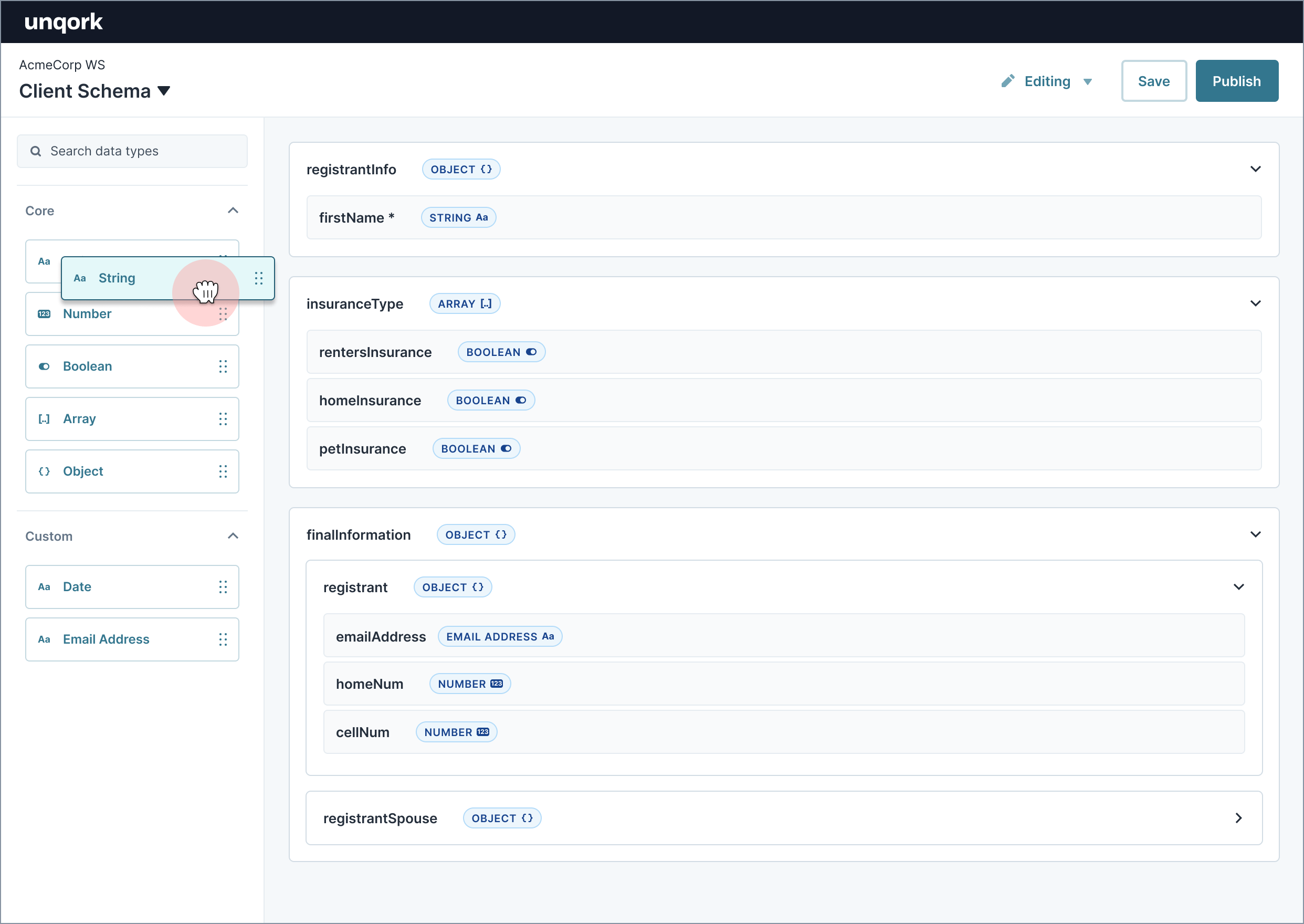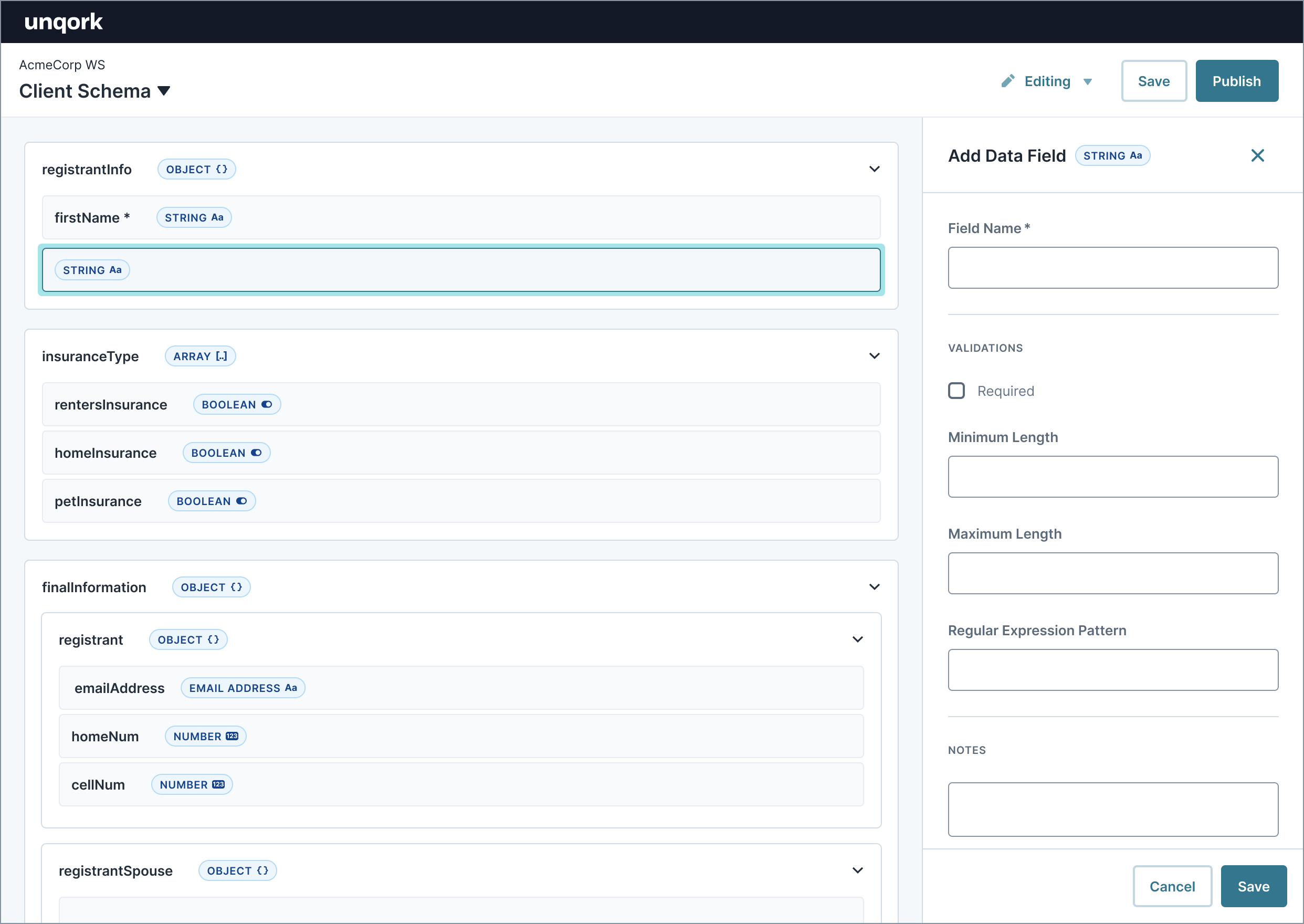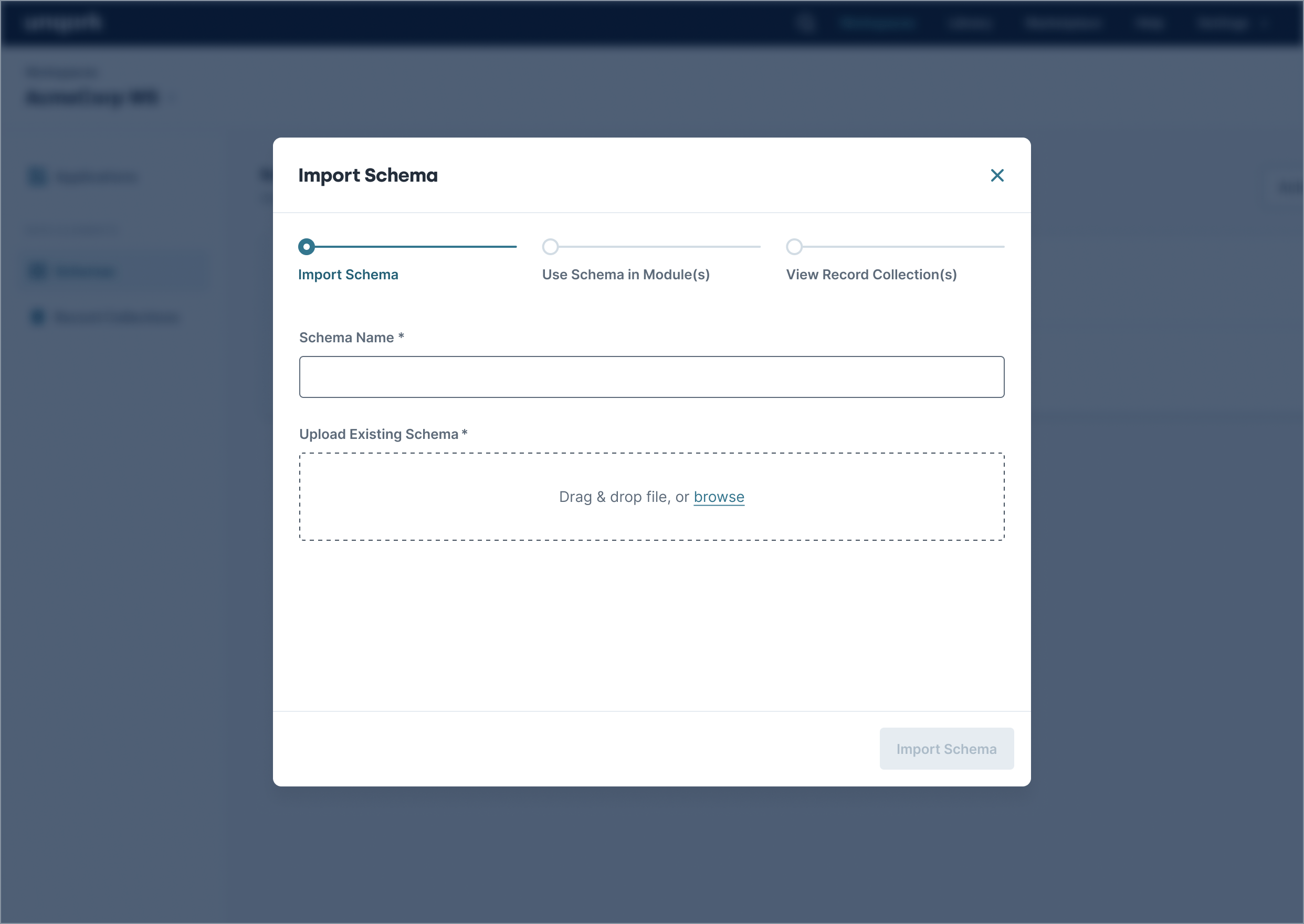I crafted visual & written artifacts to drive stakeholder alignment, and thereby inform product strategy and requirements.
As the team's first designer, I helped transition a backend team into a user-facing product team, with minimal product management support. To delve into the space, I set up 1-on-1s with each team member.
I felt like a detective, piecing together information and consolidating project-related resources.

I brought my design expertise to stakeholder meetings in the form of visual artifacts. Artifacts such as this one were instrumental in clarifying relationships & terminology, resolving internal misalignment.
Ultimately, these efforts resulted in a documented "single source of truth" that not only guided our project, but also served as a valuable resource for onboarding new team members to the project.

Through user interviews, I learned about the current tedious, error-prone workarounds to use schemas. I also learned that users prefer a Nested View of their schemas.

Here were some of the key user pain points:
- Schema fields are being defined in hacky, unintuitive ways, since there is no dedicated schema builder interface.
- Updating modules that use schemas is tedious and prone to errors. It is hard to track dependencies or changes.
- By using hidden components without validations, there are unclear & missing data types, validations, and nested data.
I also shared the following schema visualization methods with users:

The Nested View better met user expectations, feeling simpler to read and more familiar.

The ERD View was confusing, likely because users expected to see relationships between schemas in a diagram format, not the schema itself.
Using Unqork's design system, I iterated on designs and handed off a schema builder interface, alongside designs for data models & record collections.

Drag-and-drop visual schema builder, allowing users to clearly define their data fields upfront

Ability to add field validations, ensuring clear and accurate data types & rules

Guided experience for understanding where the schema fits in the overall user flow

Seamlessly bring in data fields into modules, ensuring data integrity throughout the app
Our initial release has a 95% adoption rate among clients, and enables users to import and utilize schemas in their applications.
Through this project, I learned to navigate an ambiguous space and develop concepts from 0 to 1. I also discovered how to leverage visual artifacts to align stakeholders. I'm happy to have received positive feedback from clients, and a high adoption rate after release.


"Katrina was tasked with the difficult challenge to design the experience for Data Model and Schemas without support from a dedicated Product Manager and User Researcher.
She took ownership over the initiative as the lead, independently conducting extensive research and discovery.
She delivered amazing designs that are impactful in developing a data first approach for our creators."
-- Adrian, Product Manager
< previous project - Logic Vision next project - joinIn >











